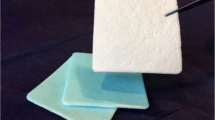Abstract
Objective
The purpose of this study was to determine the incidence of pseudomeningocele and cerebrospinal fluid (CSF) leak after posterior fossa tumor surgery and to analyze factors that may be associated with these conditions. In particular, we wished to determine if there was evidence to support the hypothesis that the use of tissue glue, dural grafts, or external ventricular drainage (EVD) prevented CSF from leaking outside the closed dura.
Materials and methods
A retrospective chart review was carried out of posterior fossa tumor resections at British Columbia’s Children’s Hospital. Information was collected regarding tumor location, surgical approach, CSF diversion, dural grafting, and use of tissue glue. Multiple univariate analyses and step-wise logistic regression were performed to identify factors associated with pseudomeningocele formation or CSF leak. A pseudomeningocele was said to be present if it was noted in the clinical records or if a fluid collection was present superficial to the craniotomy flap on a postoperative CT or MR scan.
Results
Out of 174 posterior fossa operations, 53 pseudomeningoceles with or without CSF leak were identified along with five CSF leaks in the absence of pseudomeningocele (33%). None of the factors examined reached statistical significance, although there was a trend towards higher rates in patients with external CSF drainage (P=0.06631), dural graft usage (p=0.06492), and patients in whom tissue glue was used (p=0.06181). On logistic regression, only tissue glue use and external CSF drainage were associated with increased incidence of pseudomeningocele and/or CSF leak.
Conclusion
In this retrospective study, the use of tissue glue, dural grafts, and external ventricular drainage was not associated with a reduced rate of clinically or radiologically diagnosed pseudomeningocele formation or postoperative CSF leak. The results of this study provide a basis for planning a randomized controlled trial to determine the effectiveness of tissue glue and/or dural grafting in preventing these complications.
Similar content being viewed by others
References
Allen JC (1985) Childhood brain tumors: current status of clinical trials in newly diagnosed and recurrent disease. Pediatr Clin North Am 32:633–651
Becker LE, Halliday WC (1987) Central nervous system tumors of childhood. Perspect Pediatr Pathol 10:86–134
Culley DJ, Berger MS, Shaw D, Geyer R (1994) An analysis of factors determining the need for ventriculoperitoneal shunts after posterior fossa tumour surgery in children. Neurosurgery 34:402–407
Cushing H (1931) Experiences with the cerebellar astrocytomas: a critical review of seventy six cases. Surg Gyn Obstet 52:129–204
Gnanalingham KK, Lafuente J, Thompson D, Harkness W, Hayward R (2002) Surgical procedures for posterior fossa tumours in children: does craniotomy lead to fewer complications than craniectomy? J Neurosurg 97:821–826
Gnanalingham KK, Lafuente J, Thompson D, Harkness W, Hayward R (2003) MRI study of the natural history and risk factors for pseudomeningocoele formation following postfossa surgery in children. Br J Neurosurg 17:530–536
Martinez-Lage JF, Perez-Espejo MA, Palazon JH, Lopez Hernandez F, Puerta P (2006) Autologous tissues for dural grafting in children: a report of 56 cases. Childs Nerv Syst 22:139–144
Nakajima S, Fukuda T, Hasue M, Sengoku Y, Haraoka J, Uchida T (2001) New technique for application of fibrin sealant: rubbing method devised to prevent cerebrospinal fluid leakage from dura mater sites repaired with expanded polytetrafluoroethylene surgical membranes. Neurosurgery 49:117–123
Nakamura H, Matsuyama Y, Yoshihara H, Sakai Y, Katayama Y, Nakashima S, Takamatsu J, Ishiguro N (2005) The effect of autologous fibrin tissue adhesive on postoperative cerebrospinal fluid leak in spinal cord surgery: a randomized controlled trial. Spine 30:E347–E351
Parizek J, Sercl M, Michl A, Mericka P, Nemecek S, Nemeckova J, Jakubec J (1994) Posterior fossa duraplasty in children: remarks on surgery and clinical and CT follow-up. Childs Nerv Syst 10:444–449
Author information
Authors and Affiliations
Corresponding author
Additional information
A commentary on this paper is available at http://dx.doi.org/10.1007/s00381-006-0235-z.
Rights and permissions
About this article
Cite this article
Steinbok, P., Singhal, A., Mills, J. et al. Cerebrospinal fluid (CSF) leak and pseudomeningocele formation after posterior fossa tumor resection in children: a retrospective analysis. Childs Nerv Syst 23, 171–174 (2007). https://doi.org/10.1007/s00381-006-0234-0
Received:
Published:
Issue Date:
DOI: https://doi.org/10.1007/s00381-006-0234-0




